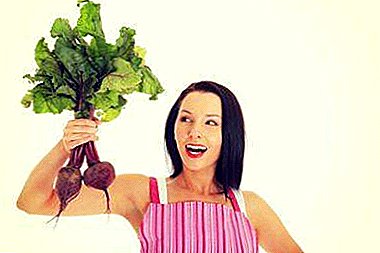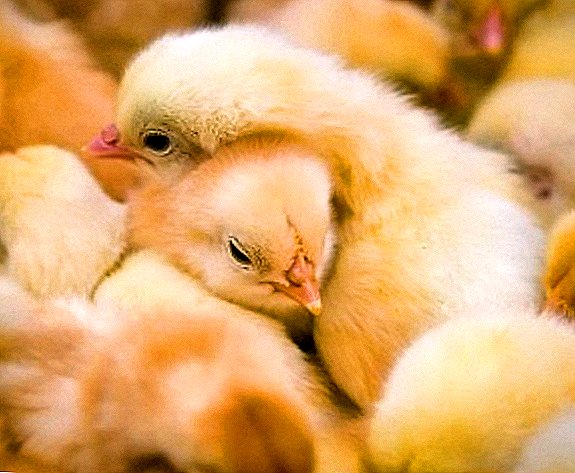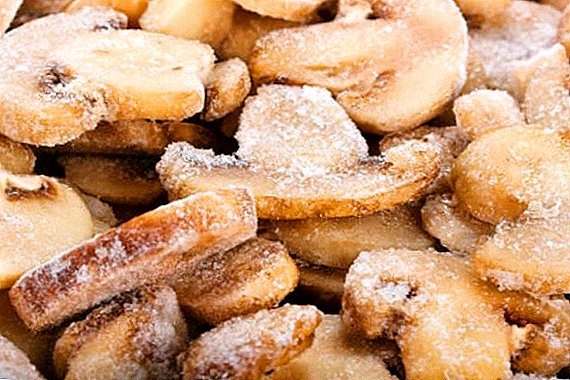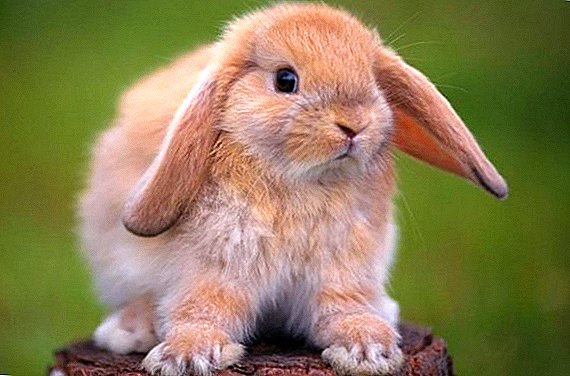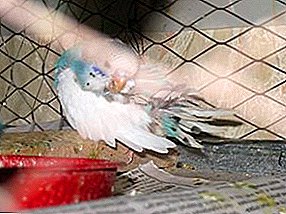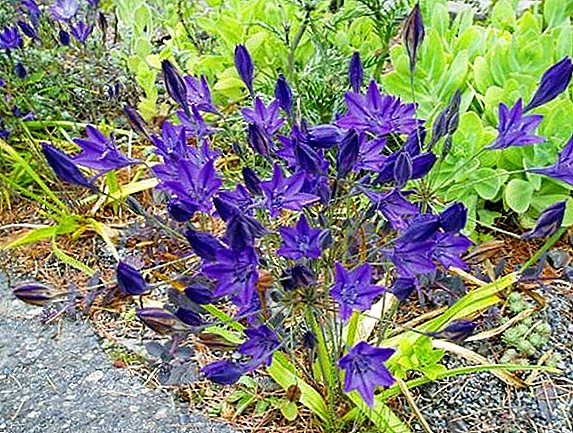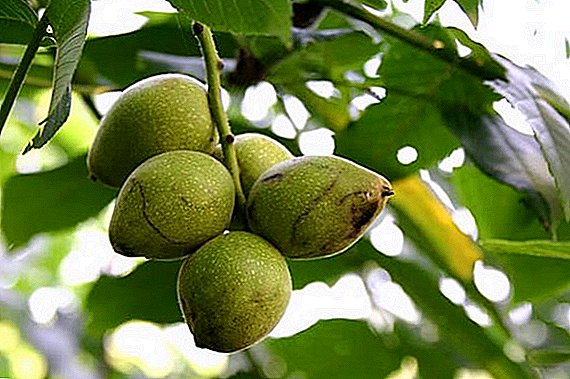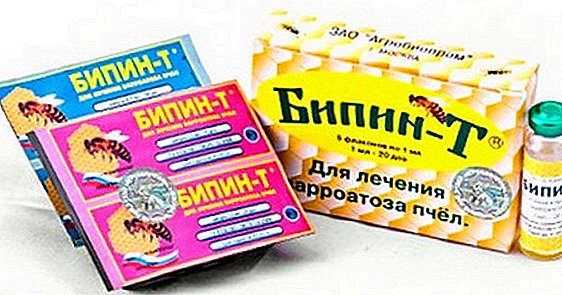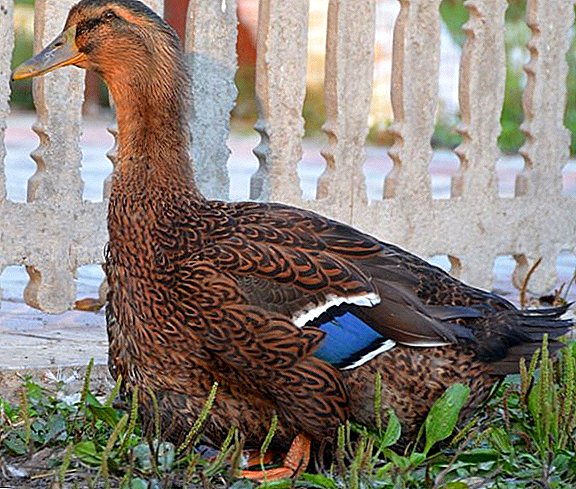 The Rouen breed of ducks is one of the few that was not bred by breeding, but was domesticated. The breed refers to the meat direction, and the meat of these ducks is very appreciated for its excellent taste. However, in the household, these birds are rarely found due to troublesome care. Most often they are kept for decorative purposes, rather than for meat. The article will consider the features of the breed and its content.
The Rouen breed of ducks is one of the few that was not bred by breeding, but was domesticated. The breed refers to the meat direction, and the meat of these ducks is very appreciated for its excellent taste. However, in the household, these birds are rarely found due to troublesome care. Most often they are kept for decorative purposes, rather than for meat. The article will consider the features of the breed and its content.
Origin of the Rouen Duck
Ducks of Rouen breed are of French origin. For the first time, the breed appeared near the city of Rouen in the north of France at the beginning of the XX century. However, the Ruan was not taken out, but simply domesticated. In the future, selection work was carried out, but they took place only within the framework of this breed and were aimed at increasing the output of meat products. 
Breed standard and description
The breed standard of the Rouen duck was approved in 1923 in England. From that moment, these waterfowl began to spread throughout the world outside of their homeland - France.
Important! Due to the fact that British breeders tried in every way to improve the breed, the color of the birds changed and the structure of the hull slightly changed.
Thus, in France, light-feathered ducks are bred, very similar to their wild relatives, lighter and more mobile, but the English Ruleans have acquired a dark, brownish color of feathers and a heavy, massive body, making their movement difficult and slow.  The exterior of the Rouen duck is characterized by the following parameters:
The exterior of the Rouen duck is characterized by the following parameters:
- Color drakes - color, beautiful, very close to the color of wild mallards. The neck and head of males have a rich, iridescent greenish or purple hue, in the lower part of the neck there is a bright white bezel. A similar pattern is found on the wings. Chest dark, chestnut or brownish-brown. The tail is shiny and darker than other parts of the body, with curled feathers.
- The color of the females is different from the drakes. They have a more uniform plumage - the head, neck and wings of chestnut or brown color, on the wings there is a pattern similar to that of the drakes. On the head of the beak towards the neck stretch two dark stripes. Bottom torso lighter, grayish.
- Beak at the drake - yellow, may have a greenish tint, with a black spot in the upper part, rather long and wide.
- Duck's beak - short, orangish shimmer with dark specks on top.
- Head - small in size, medium in width.
- Neck - not long, medium height, slightly curved.
- Torso - heavy, massive, muscular, large, horizontal.
- Chest - wide and deep.
- Back - wide, slightly narrowed at the tail.
- Paws - strong, thick, short, orange.
 Because of the massive, large body and short legs, the Rouen ducks move slowly, waddling.
Because of the massive, large body and short legs, the Rouen ducks move slowly, waddling.
Did you know? Duck voice, no matter how loud it is, does not have an echo. However, only females are capable of quacking, but drakes are silent.
Characteristics of breed productivity
This breed of ducks refers to the meat direction.
Live weight reaches the following indicators:
- for duck - from 3 kg to 3.5 kg;
- for drake - from 3.5 kg to 4 kg.
Young birds gain weight rapidly and by the second month of life can already reach 2 kg.  Egg production in Ruan is not very high - from 80 to 90 eggs per year, and the incubation instinct is poorly developed: duck-laying hens can either not sit on the eggs at all, or throw the eggs in the middle of the incubation period. Egg weight does not exceed 90 g, and the shell has a light green color.
Egg production in Ruan is not very high - from 80 to 90 eggs per year, and the incubation instinct is poorly developed: duck-laying hens can either not sit on the eggs at all, or throw the eggs in the middle of the incubation period. Egg weight does not exceed 90 g, and the shell has a light green color.
Duck meat breeds are distinguished by the highest meat productivity compared with all breeds. Familiarize yourself with the best breeds of meat ducks: gray Ukrainian duck, Ogar, and also with broiler duck breeds.
The merits of Rouen duck
The advantages of this breed include:
- aesthetically pleasing appearance that makes Ruan frequent participants in various exhibitions;
- high taste of meat. It is juicy, with a rich flavor, soft. They cook Ruanian meat in a special way - under pressure, and the bird is slaughtered with the help of strangulation, so that the blood is preserved in the carcass, because it is in many respects that gives the meat a savory taste;
- meat is considered a delicacy and is served in the best restaurants in France;
- quick weight gain;
- good yield of meat products from individuals.

Disadvantages of Rouen Duck
The breed in question has not been widely adopted in meat production, and this is due to several good reasons:
- because of the color plumage, the carcass has an unattractive appearance that is far from commercial;
- cooking meat has some technological difficulties and according to the rules, not even all restaurants can be carried out;
- Ruanians require painstaking and complex care, they are difficult to maintain;
- birds require food and living conditions;
- not suitable for novice poultry farmers;
- birds with obesity lose their ability to egg production, as well as their meat quality suffers - it becomes less tasty;
- there is practically no incubation instinct, so these ducks are not suitable for breeding.

Breeding of Rouen ducks at home
Rouen breed of ducks is demanding for care and maintenance, therefore, the cultivation of such poultry is not suitable for every poultry farmer. In this connection, Ruan people are not grown on industrial poultry farms, but are bred only occasionally in small private farms.
Did you know? After the ducklings hatch from the egg, they take for their mother any living creature that is near, and this may not be their mother.
Nutrition and feeding
Ruanians themselves are not demanding of food and are able to consume the entire pasture, but in this case, the ducks can gain weight very quickly, while accumulating fat, which is bad for both the quality of meat and the egg production.  It is important that in the diet of the Rouen duck be present:
It is important that in the diet of the Rouen duck be present:
- dry cereals (barley, wheat, millet, oats, some corn);
- wet mash (possible on the basis of feed);
- protein feed (meat boiled and dairy waste, cottage cheese and lactic acid products);
- fresh greens (marsh duck, chopped grass, but best of all if the bird has the ability to walk in open water, where it will fill the need for greens with the help of algae, plankton and other small living creatures and plant growing)
- fortified compounds (bone and meat flour);
- always clean and fresh water.
In the first days of life, the food of ducklings should be as rich as possible in proteins, therefore babies are given wet mash from boiled eggs, cottage cheese and any fermented milk products. From the third day, it is already possible to add chopped fresh greens, scalded with boiling water, into this mash.  By the end of the first week of life, ducklings can already be given cereals, having previously ground them, and mineral additives (meat and bone meal and small shellfish). But from the age of two weeks, dairy products have to be removed, replacing it with boiled vegetables, for example, potatoes or carrots and cabbage.
By the end of the first week of life, ducklings can already be given cereals, having previously ground them, and mineral additives (meat and bone meal and small shellfish). But from the age of two weeks, dairy products have to be removed, replacing it with boiled vegetables, for example, potatoes or carrots and cabbage.
Proper nutrition is the key to good bird health. Read on how to properly formulate a diet for ducks at home, how to feed small ducklings, and also how to independently prepare compound feed for ducks.
Meals during the day for Ruanians must be only two meals - in the morning and in the evening. Moreover, in the morning it is recommended to feed the birds not earlier than 10 am, since until that moment the ducks are actively rushing. In the evening, the birds are fed immediately before bedtime.
It is recommended that long breaks be observed between meals, but this condition can be difficult to meet if Ruanians have free range.  Access to water for ducks should be constant, as they drink a lot. It is necessary to monitor the cleanliness of the drinkers, add fresh water and prevent stagnation of the liquid.
Access to water for ducks should be constant, as they drink a lot. It is necessary to monitor the cleanliness of the drinkers, add fresh water and prevent stagnation of the liquid.
To provide poultry with clean drinking water, it is necessary to install a sufficient number of drinkers in the house. Consider all the details of making ducklings drinkers with your own hands.
For active growth ducklings from the first day require frequent feeding (up to 4-5 times a day), enriched with proteins.
The products that are included in the diet of ducks include:
- cereals - corn (best suited for ducks, since it contains almost no fiber and is well digested), wheat, barley, millet, oats, and legumes (yield in a ground form and only at the rate of 10% of the total grain);
- wheat bran (only in a volume of not more than 20% of the total dry feed);
- meal and meal - rapeseed, sunflower, soybean, peanut, cotton;
- yeast - beer and baking;
- green vegetation from ponds and meadows;
- dry bread and crackers (before feeding, they are soaked in warm water);
- boiled vegetables (carrots, cabbage, potatoes, pumpkin);
- meat and bone meal;
- mineral supplements - shellfish, crushed egg shells, chalk, fine gravel, table salt and coarse sand.
 There are also those products that are better for waterfowl not to give for one reason or another:
There are also those products that are better for waterfowl not to give for one reason or another:- fresh bread and any moldy feed - This is the main cause of aspergillosis;
- flour - it swells, sticks together and clogs the duck nasal passages, causing breathing problems;
- any products that deteriorate quickly and can cause digestive disorders, - cereal, cooked with milk, or just fresh milk;
- raw nettle - getting into the bird's stomach, it burns its walls, thereby causing irritation, so the nettles must first be scalded with boiling water;
- poisonous greens in particular, be careful with maple leaves, as they are dangerous and poisonous to ducks.
Bird care
Waterfowl need daily walking, so the duckling must have a walking yard. Such a site, like the house itself, must contain troughs and drinkers (of a closed type). Ideal if waterfowl have access to a reservoir. If there is no one nearby, you can equip it yourself in the courtyard.
Important! The Rouen breed is more prone to obesity than the rest of the waterfowl, therefore its diet should be nutritious, but strictly dosed so that the bird does not overeat. Especially carefully you need to monitor those waterfowl who are in free range and can eat more outside the house than you need.
Vaccinating ducklings is carried out only if the herd has a clear predisposition to viral or bacterial infections. If the herd is healthy and does not have contact with other birds that may be carriers, then for their health it is enough to follow a rich diet and feeding regime.  Vaccinating ducklings against viral or bacterial infections But if you bought ducklings from other hands, it is better to feed the chicks with antibacterial drugs, such as Enroflon, in the first three days of life.
Vaccinating ducklings against viral or bacterial infections But if you bought ducklings from other hands, it is better to feed the chicks with antibacterial drugs, such as Enroflon, in the first three days of life.
Read about how ducklings and ducks can get sick.
The weeping house should be cleaned daily: change the water to fresh, wash and disinfect the feeders and drinkers, clean the nests from litter, clean the floor and change the litter as needed.
Conditions of detention
Newborn ducklings can be placed so that on 1 square. m accounted for up to 16 individuals. But by two weeks, these boundaries should double. Adult ducks will feel most comfortable, if at 1 square. m accounts for no more than 3 individuals.  The floor should be warm and dry - there should be no drafts, high humidity and stagnant water. It is covered with a thick layer of litter (10-20 cm), which must be changed periodically. Its partial substitution can be carried out as it is contaminated - about once a week.
The floor should be warm and dry - there should be no drafts, high humidity and stagnant water. It is covered with a thick layer of litter (10-20 cm), which must be changed periodically. Its partial substitution can be carried out as it is contaminated - about once a week.
An adult flock does not need additional heating, including in the winter time - just a well-insulated and fortified house, in which there are no drafts. The main thing is that in the winter season the temperature here does not fall below + 5 ° С.
Did you know? During the duck molt period they lose so many feathers that they lose the ability to fly for a while.
However, the temperature regime is worth considering if you breed ducklings. As long as the chicks do not fledge, they are very vulnerable to low temperatures, and the smaller the brood, the higher the temperature should be - from + 28 ° C with a gradual decrease to + 21-24 ° C.
The room in which the herd lives should be dry and well ventilated, because the risk of developing pathogenic bacteria is increased in the house with stale and humid air. It is not desirable that moisture and waste products of birds accumulate here. Therefore, ventilation should be good, but without blowing and drafts, otherwise the birds will be sick.  Ventilation in a duckling house to support the health of birds. In the first days of life, ducklings need around-the-clock lighting, as the chicks still do not distinguish between day and night, and in the dark can be lost and frightened. Gradually, however, lighting begins to be limited, setting the daylight hours necessary for adult ducks, 9-10 hours long. In the daytime they need good, bright lighting, but without an overabundance of sunlight.
Ventilation in a duckling house to support the health of birds. In the first days of life, ducklings need around-the-clock lighting, as the chicks still do not distinguish between day and night, and in the dark can be lost and frightened. Gradually, however, lighting begins to be limited, setting the daylight hours necessary for adult ducks, 9-10 hours long. In the daytime they need good, bright lighting, but without an overabundance of sunlight.
Duck nests are arranged in a very quiet and shaded poultry house section so that the hens are calm during the laying process. Usually the nests are made of plywood boards in the form of a 50x50x35 cm box with a small weight not more than 8 cm high. This is necessary so that the duck can easily cross the threshold, and the eggs do not roll out of the nest.  Drinking bowls for ducklings are recommended to be made closed so that the chicks cannot get into them, otherwise the water will always be dirty, and this is dangerous for the health of the young. Water temperature for babies should not fall below + 20 ° С.
Drinking bowls for ducklings are recommended to be made closed so that the chicks cannot get into them, otherwise the water will always be dirty, and this is dangerous for the health of the young. Water temperature for babies should not fall below + 20 ° С.
Agree, it is very important to provide the bird with comfortable conditions for development. Learn how to build a duck shed yourself, and learn how to make a nest for a domestic duck.
The content of the Rouen duck breed is not too different from the content of other breeds. However, it is necessary to carefully monitor the diet of birds, which must be balanced and clearly dosed, otherwise the birds will suffer from obesity. For the rest, the Ruanians are calm in their liking, not noisy, not noisy, and get along well with all other species in the poultry yard.


